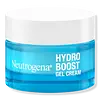What's inside
What's inside
 Key Ingredients
Key Ingredients

 Benefits
Benefits

 Concerns
Concerns

 Ingredients Side-by-side
Ingredients Side-by-side

Water
Skin ConditioningGlycerin
HumectantDimethicone
EmollientCetearyl Olivate
Sorbitan Olivate
EmulsifyingSodium Hyaluronate
HumectantSerine
MaskingGlycine
BufferingAlanine
MaskingThreonine
Arginine
MaskingProline
Skin ConditioningLysine Hcl
Skin ConditioningGlutamic Acid
HumectantSodium PCA
HumectantPCA
HumectantSodium Lactate
BufferingUrea
BufferingSodium Chloride
MaskingCitric Acid
BufferingBetaine
HumectantAllantoin
Skin ConditioningFructose
HumectantMaltose
MaskingTrehalose
HumectantGlucose
HumectantPentylene Glycol
Skin ConditioningSynthetic Beeswax
Emulsion StabilisingPolyacrylate Crosspolymer-6
Emulsion StabilisingDimethicone Crosspolymer
Emulsion StabilisingDimethiconol
EmollientEthylhexylglycerin
Skin ConditioningCaprylyl Glycol
EmollientSodium Hydroxide
BufferingWater, Glycerin, Dimethicone, Cetearyl Olivate, Sorbitan Olivate, Sodium Hyaluronate, Serine, Glycine, Alanine, Threonine, Arginine, Proline, Lysine Hcl, Glutamic Acid, Sodium PCA, PCA, Sodium Lactate, Urea, Sodium Chloride, Citric Acid, Betaine, Allantoin, Fructose, Maltose, Trehalose, Glucose, Pentylene Glycol, Synthetic Beeswax, Polyacrylate Crosspolymer-6, Dimethicone Crosspolymer, Dimethiconol, Ethylhexylglycerin, Caprylyl Glycol, Sodium Hydroxide
Water
Skin ConditioningAlcohol Denat.
AntimicrobialPropanediol
SolventPPG-26-Buteth-26
Skin ConditioningPhenoxyethanol
PreservativePEG-40 Hydrogenated Castor Oil
EmulsifyingMelaleuca Alternifolia Leaf Oil
AntioxidantCaprylyl Glycol
EmollientAmmonium Acryloyldimethyltaurate/Vp Copolymer
Salicylic Acid
MaskingXanthan Gum
EmulsifyingCalophyllum Inophyllum Seed Oil
AntimicrobialDisodium EDTA
Medicago Sativa Extract
TonicPotassium Hydroxide
BufferingAloe Barbadensis Leaf Juice Powder
Skin ConditioningLimonene
PerfumingSodium Hyaluronate
HumectantCitral
PerfumingT-Butyl Alcohol
PerfumingSodium Benzoate
MaskingCitronellol
PerfumingLeptospermum Petersonii Oil
MaskingTocopherol
AntioxidantWater, Alcohol Denat., Propanediol, PPG-26-Buteth-26, Phenoxyethanol, PEG-40 Hydrogenated Castor Oil, Melaleuca Alternifolia Leaf Oil, Caprylyl Glycol, Ammonium Acryloyldimethyltaurate/Vp Copolymer, Salicylic Acid, Xanthan Gum, Calophyllum Inophyllum Seed Oil, Disodium EDTA, Medicago Sativa Extract, Potassium Hydroxide, Aloe Barbadensis Leaf Juice Powder, Limonene, Sodium Hyaluronate, Citral, T-Butyl Alcohol, Sodium Benzoate, Citronellol, Leptospermum Petersonii Oil, Tocopherol
 Reviews
Reviews

Ingredients Explained
These ingredients are found in both products.
Ingredients higher up in an ingredient list are typically present in a larger amount.
Caprylyl Glycol is a humectant and emollient, meaning it attracts and preserves moisture.
It is a common ingredient in many products, especially those designed to hydrate skin. The primary benefits are retaining moisture, skin softening, and promoting a healthy skin barrier.
Though Caprylyl Glycol is an alcohol derived from fatty acids, it is not the kind that can dry out skin.
This ingredient is also used as a preservative to extend the life of products. It has slight antimicrobial properties.
Learn more about Caprylyl GlycolSodium Hyaluronate is hyaluronic acid's salt form. It is commonly derived from the sodium salt of hyaluronic acid.
Like hyaluronic acid, it is great at holding water and acts as a humectant. This makes it a great skin hydrating ingredient.
Sodium Hyaluronate is naturally occurring in our bodies and is mostly found in eye fluid and joints.
These are some other common types of Hyaluronic Acid:
Learn more about Sodium HyaluronateWater. It's the most common cosmetic ingredient of all. You'll usually see it at the top of ingredient lists, meaning that it makes up the largest part of the product.
So why is it so popular? Water most often acts as a solvent - this means that it helps dissolve other ingredients into the formulation.
You'll also recognize water as that liquid we all need to stay alive. If you see this, drink a glass of water. Stay hydrated!
Learn more about Water